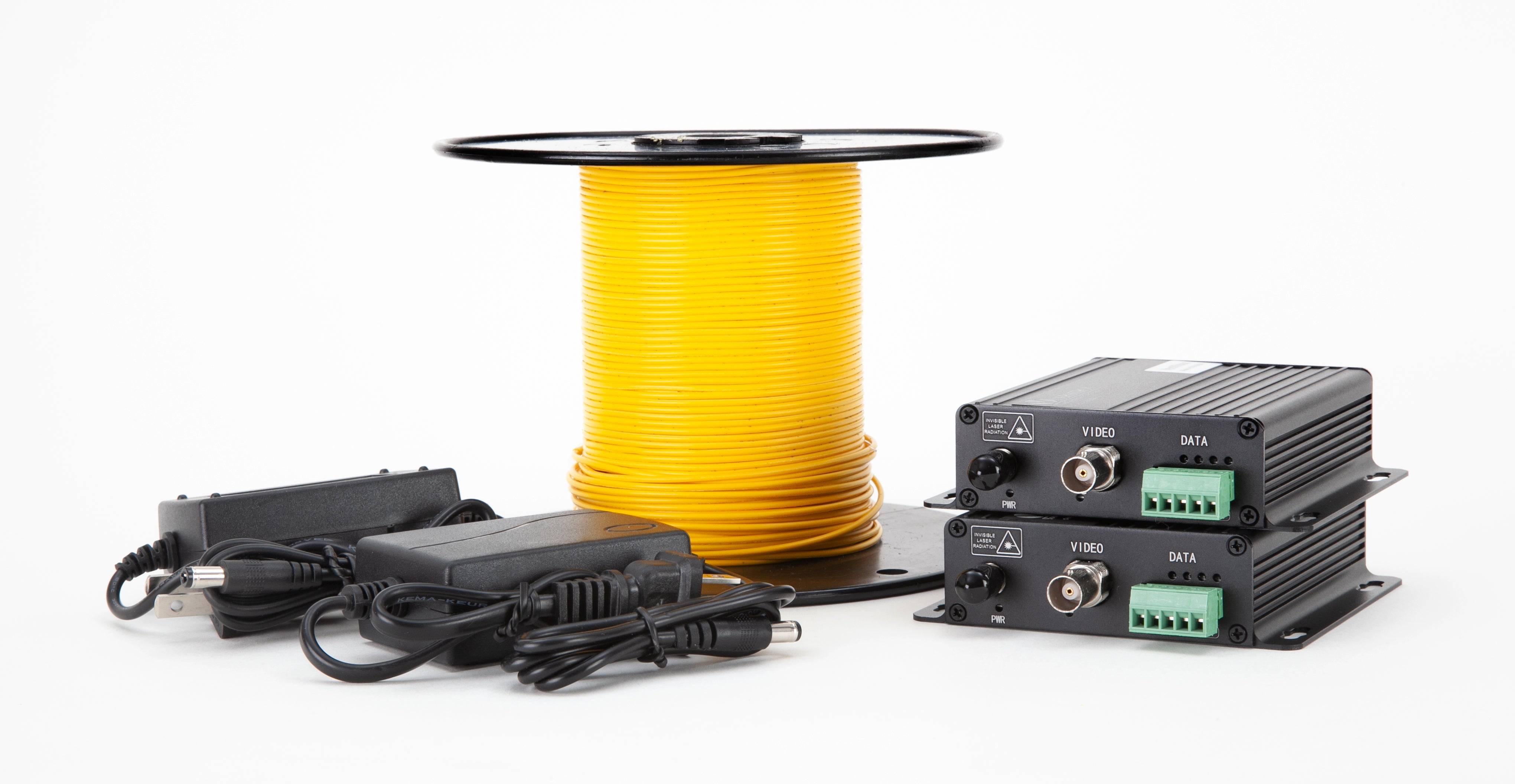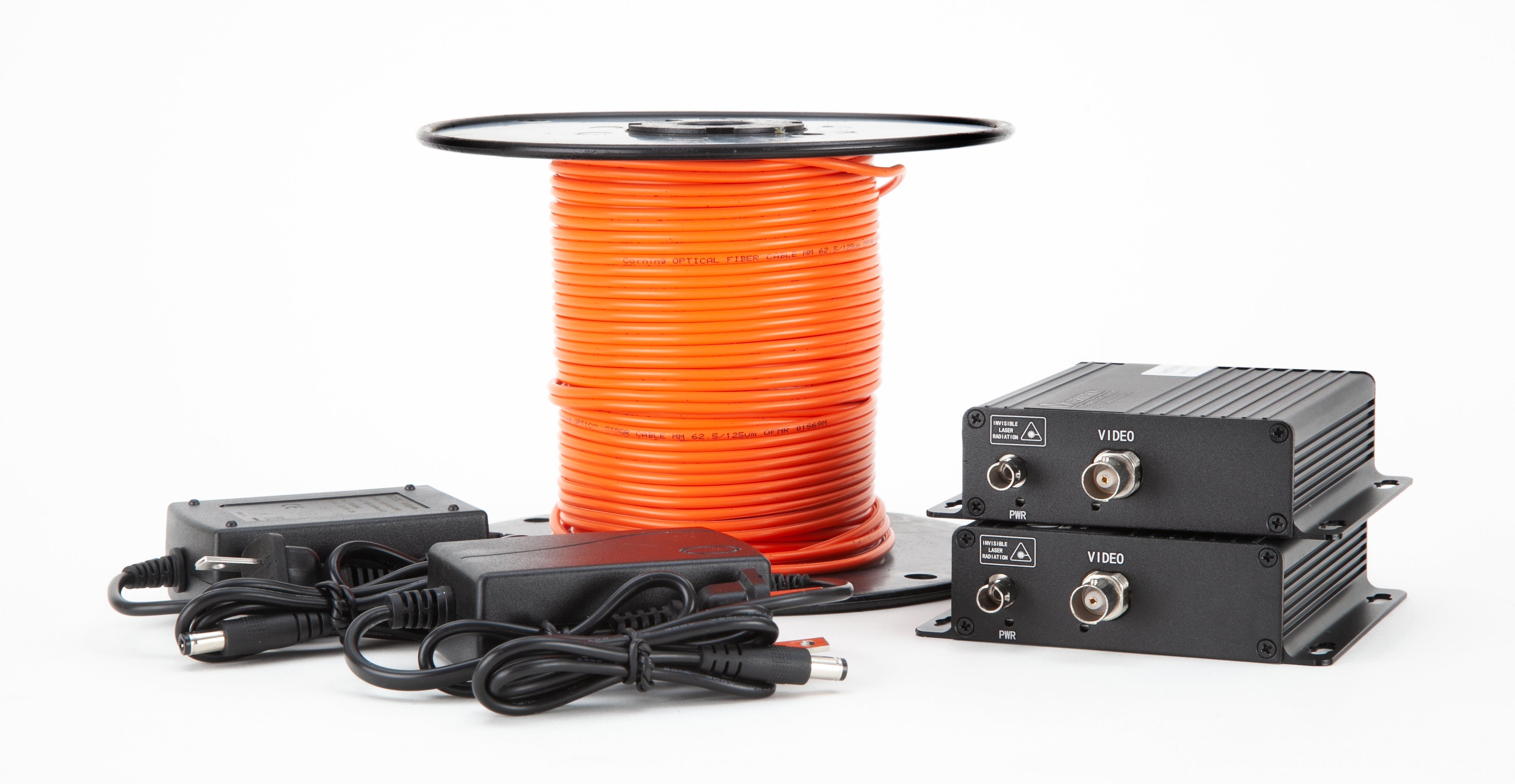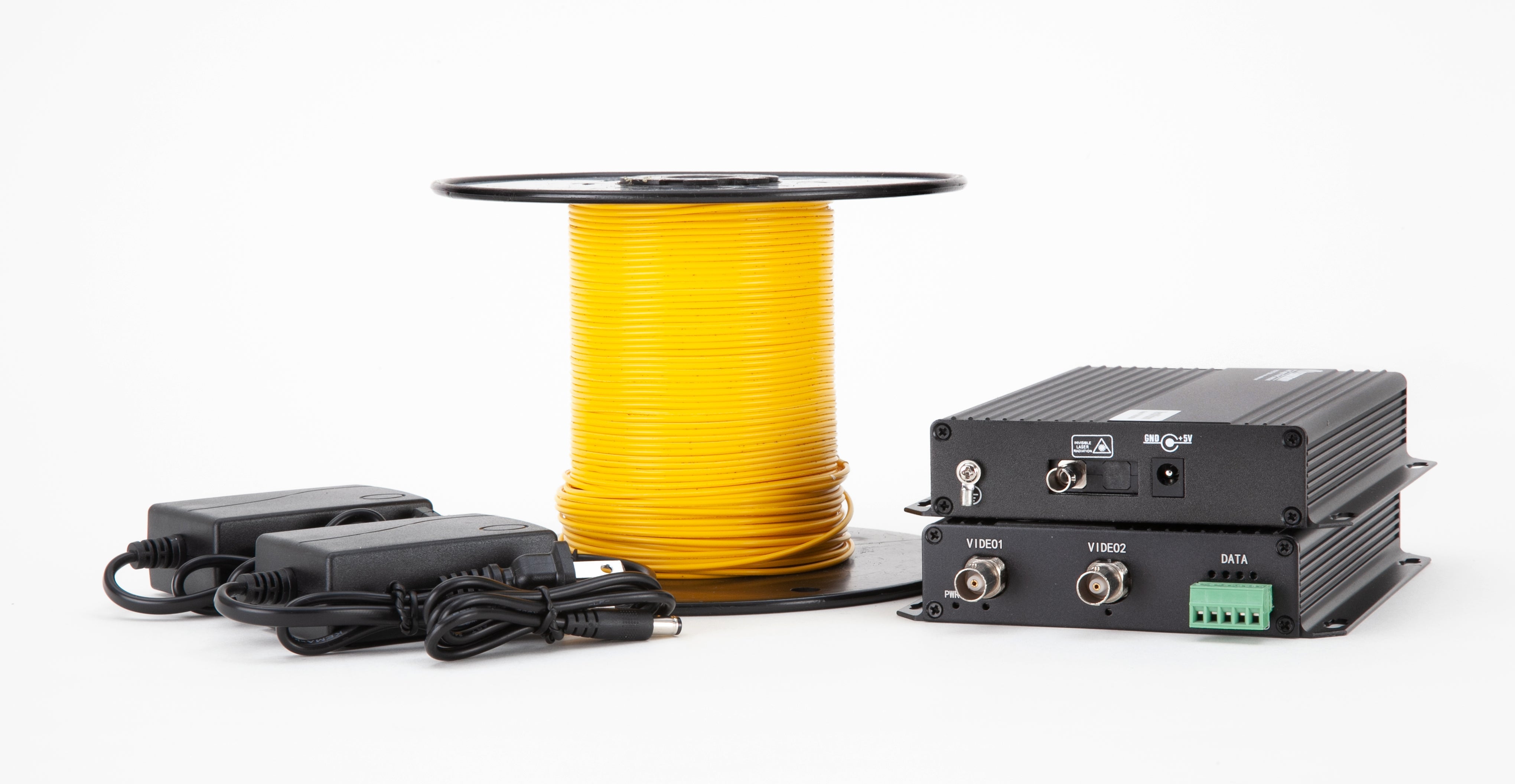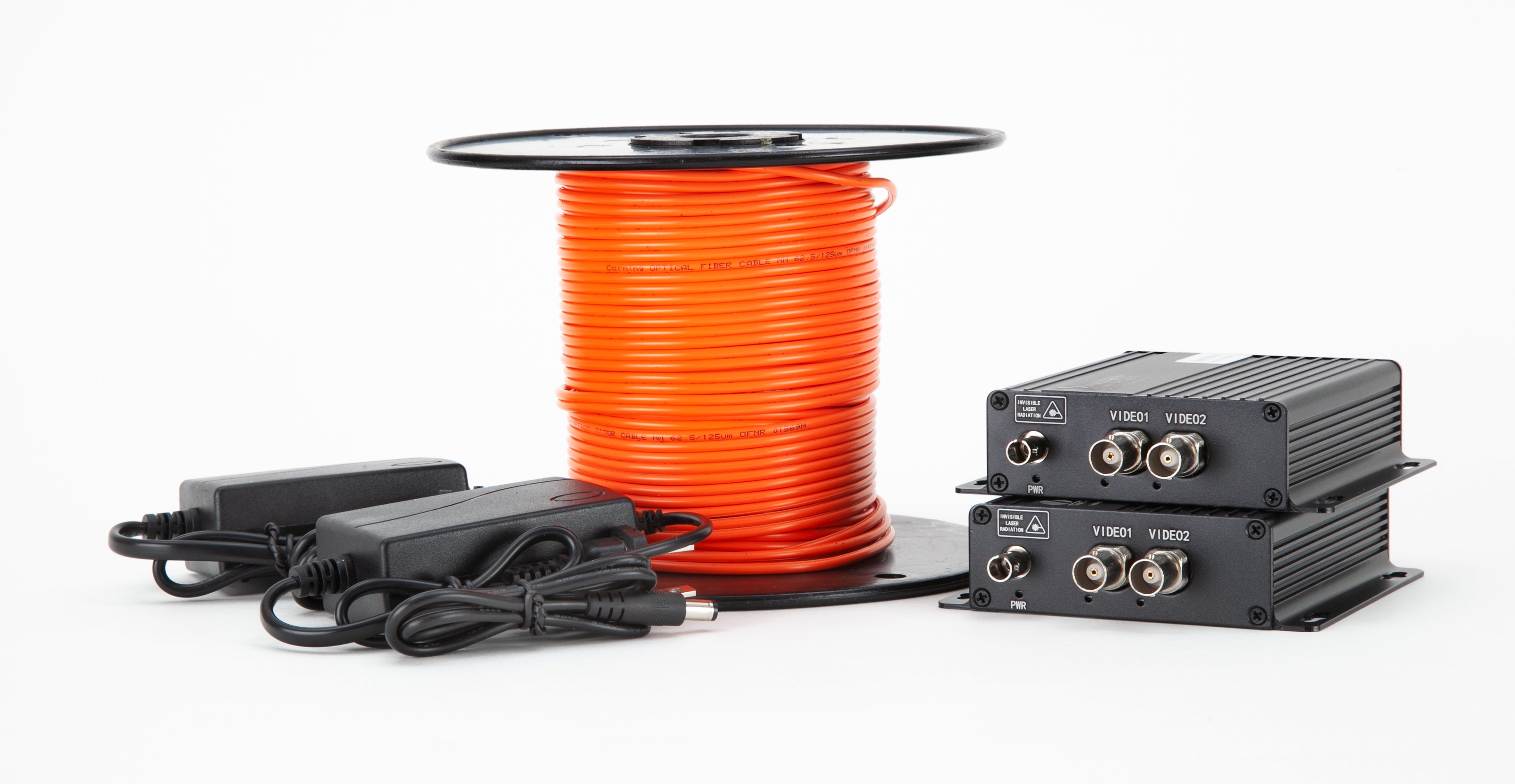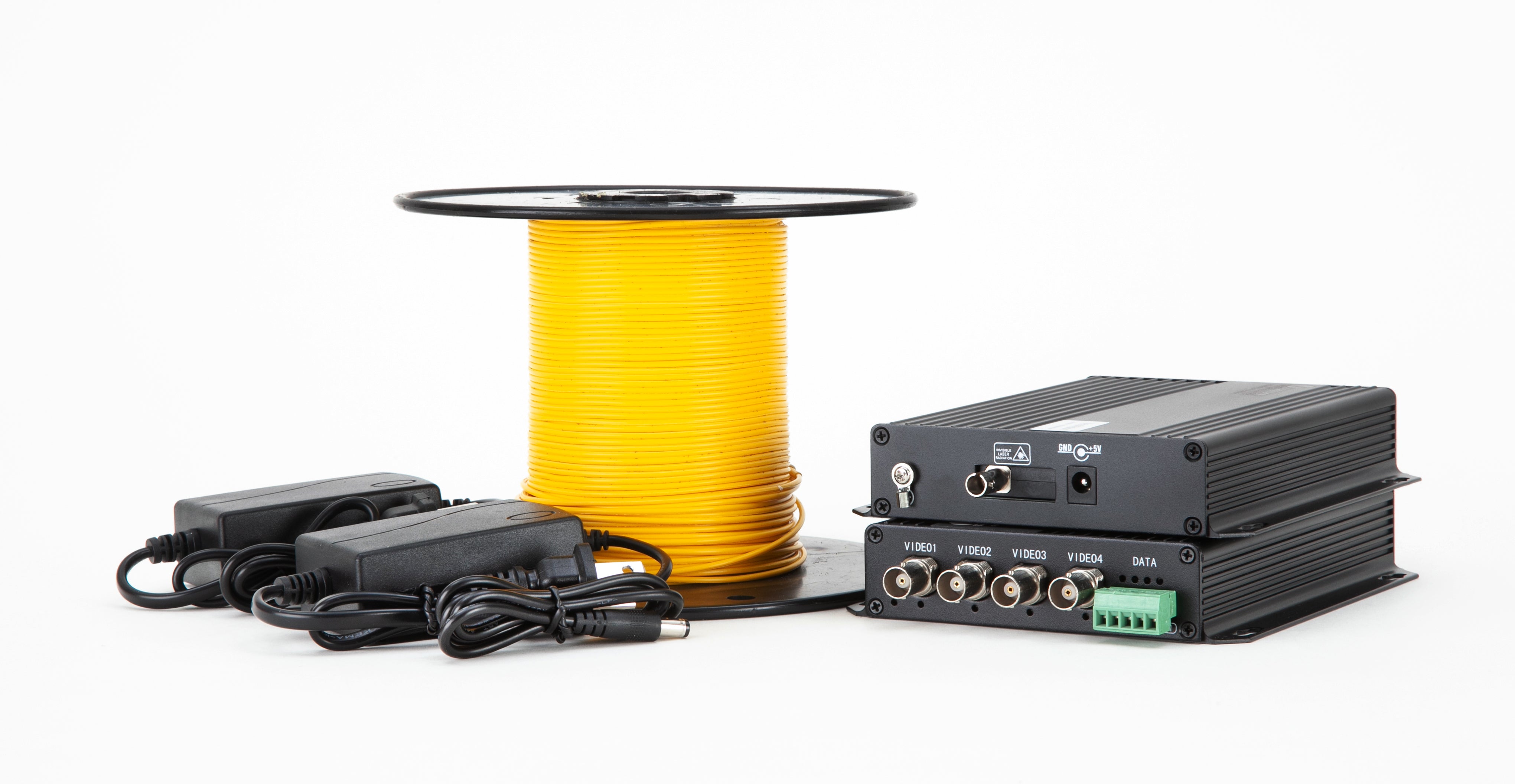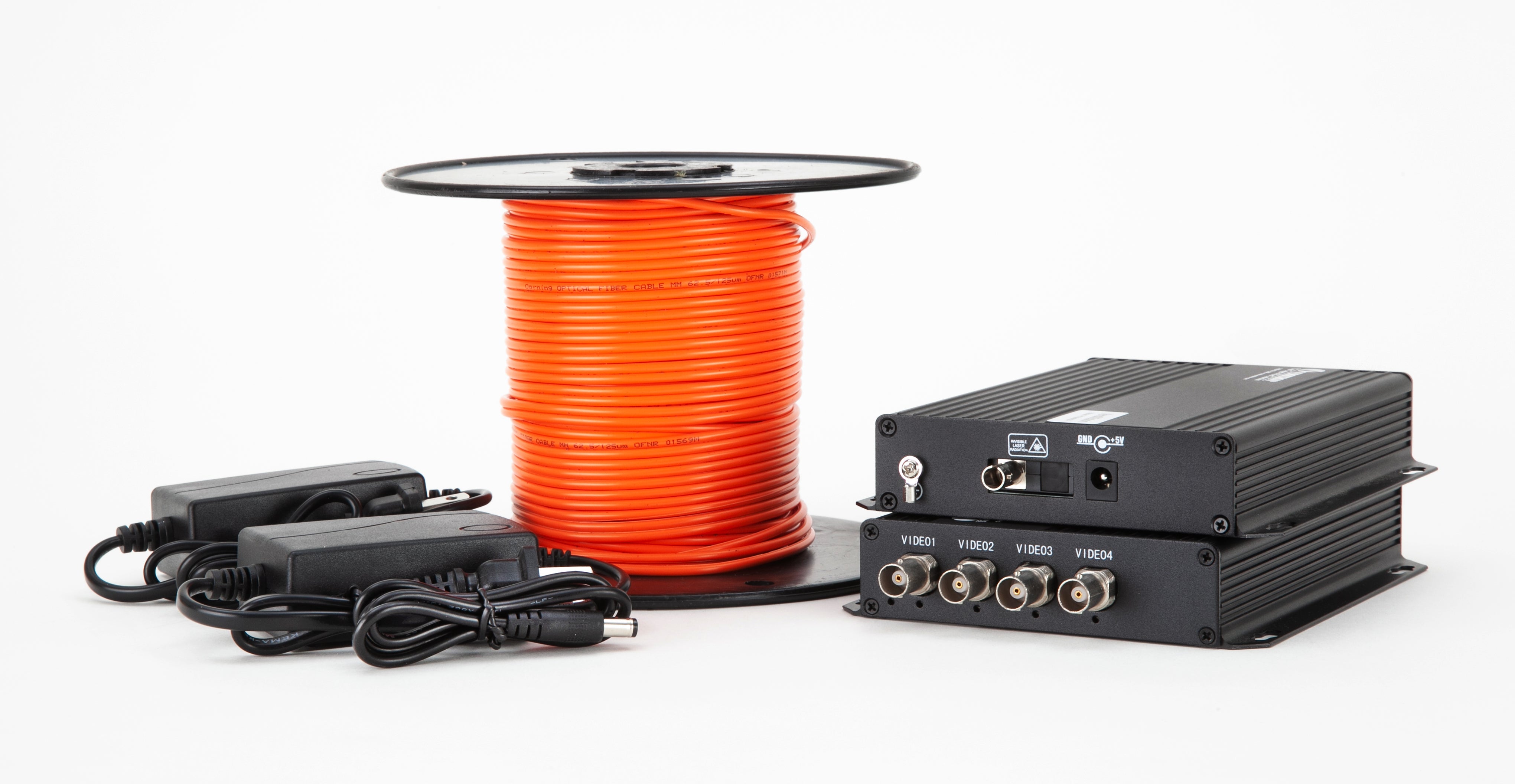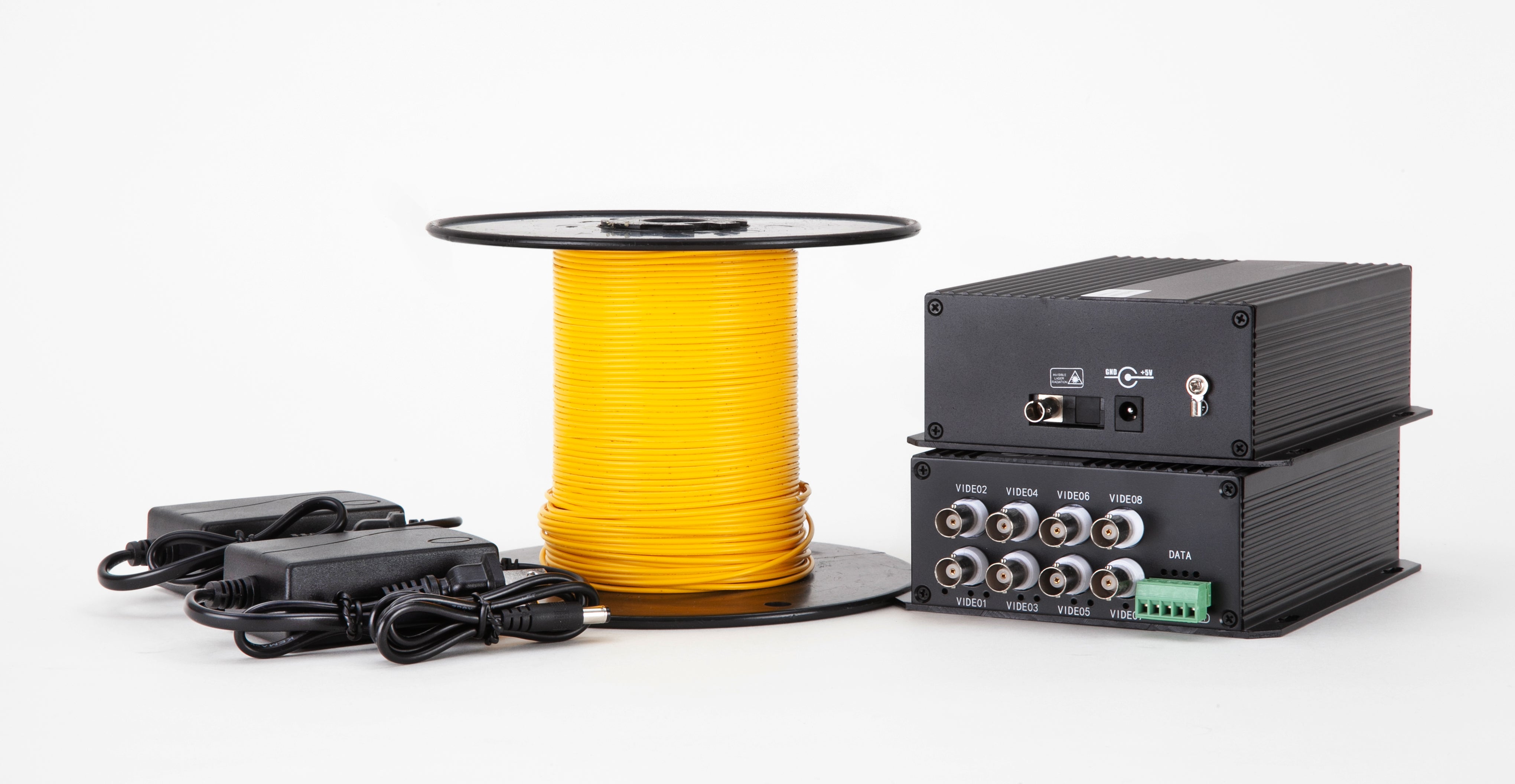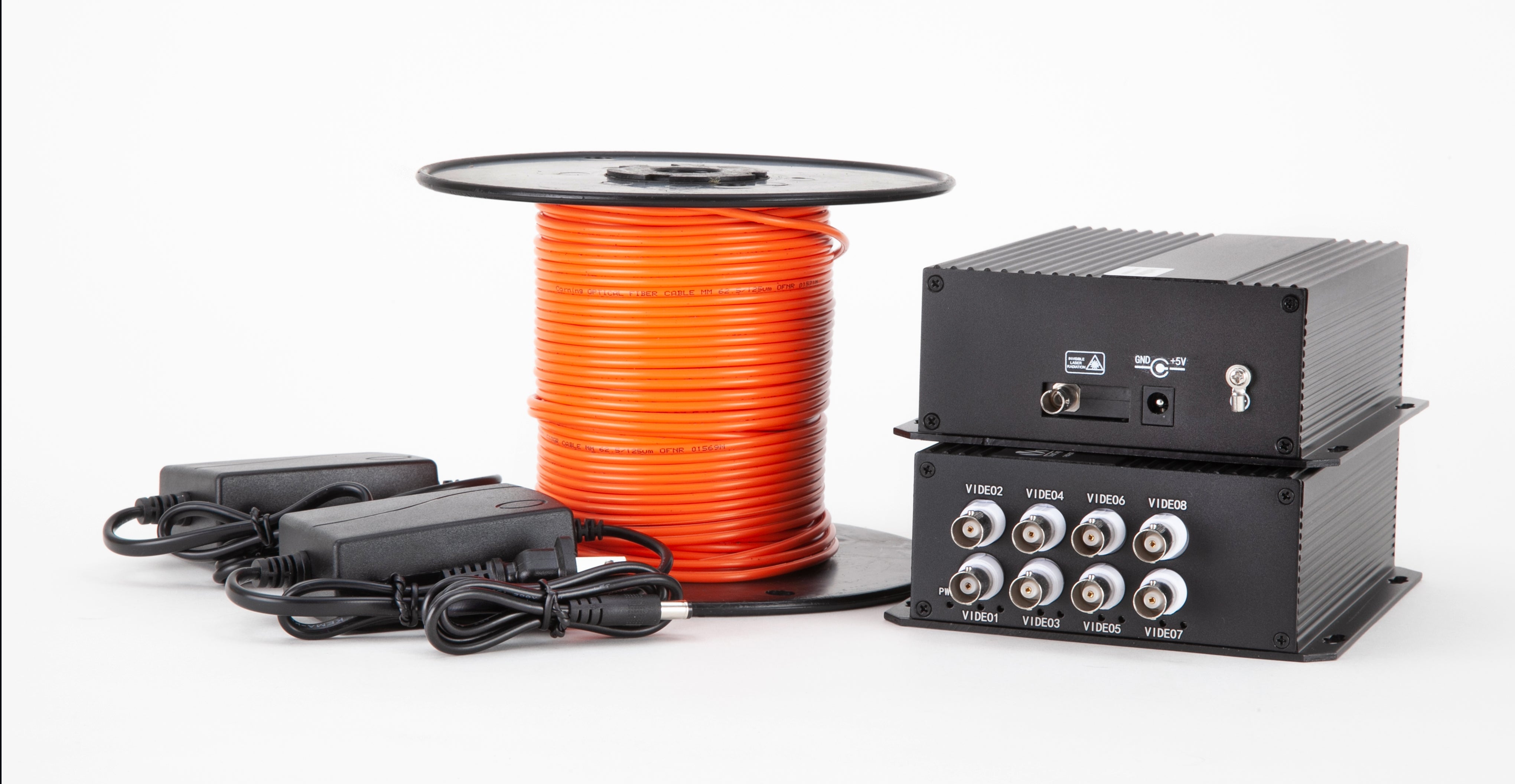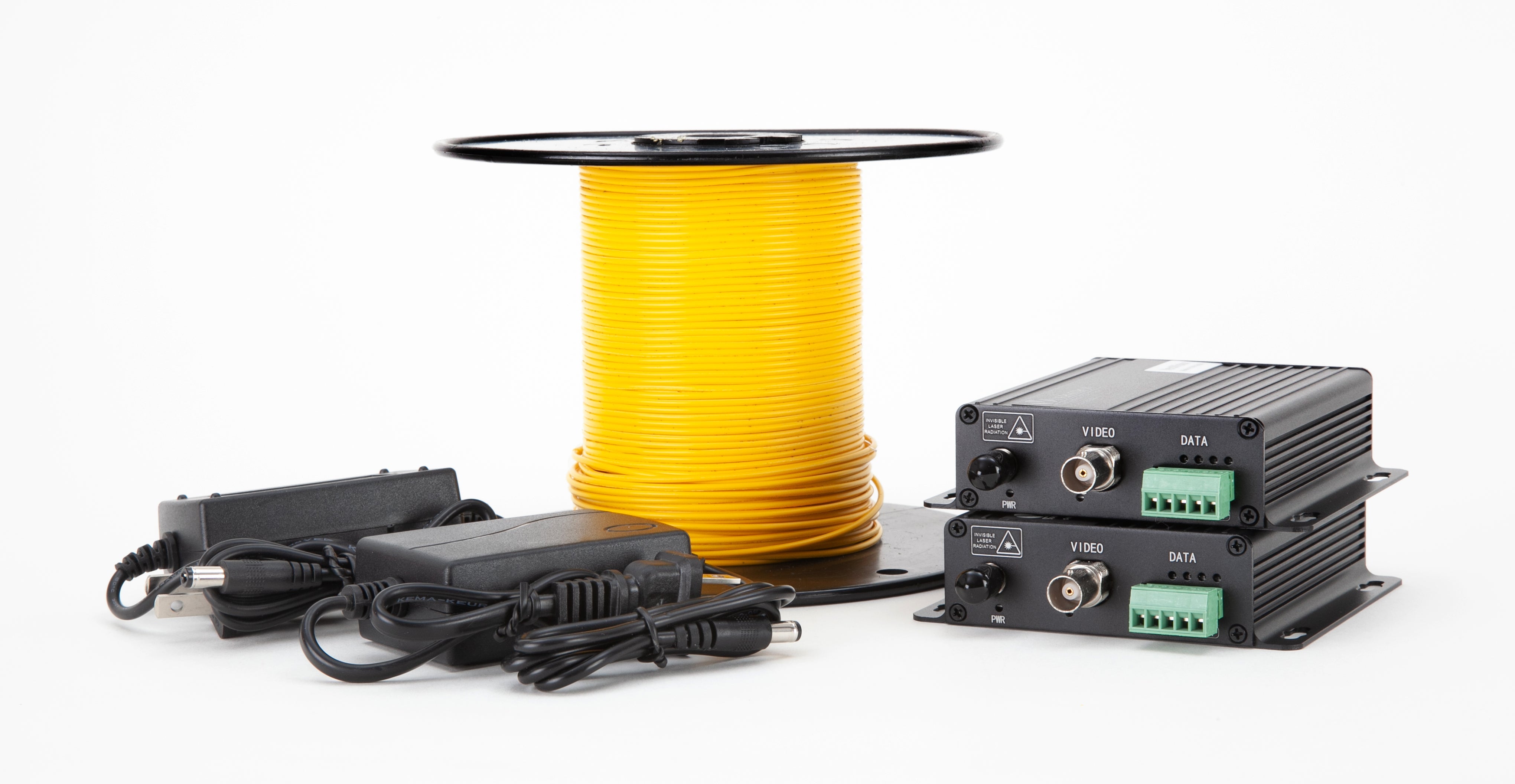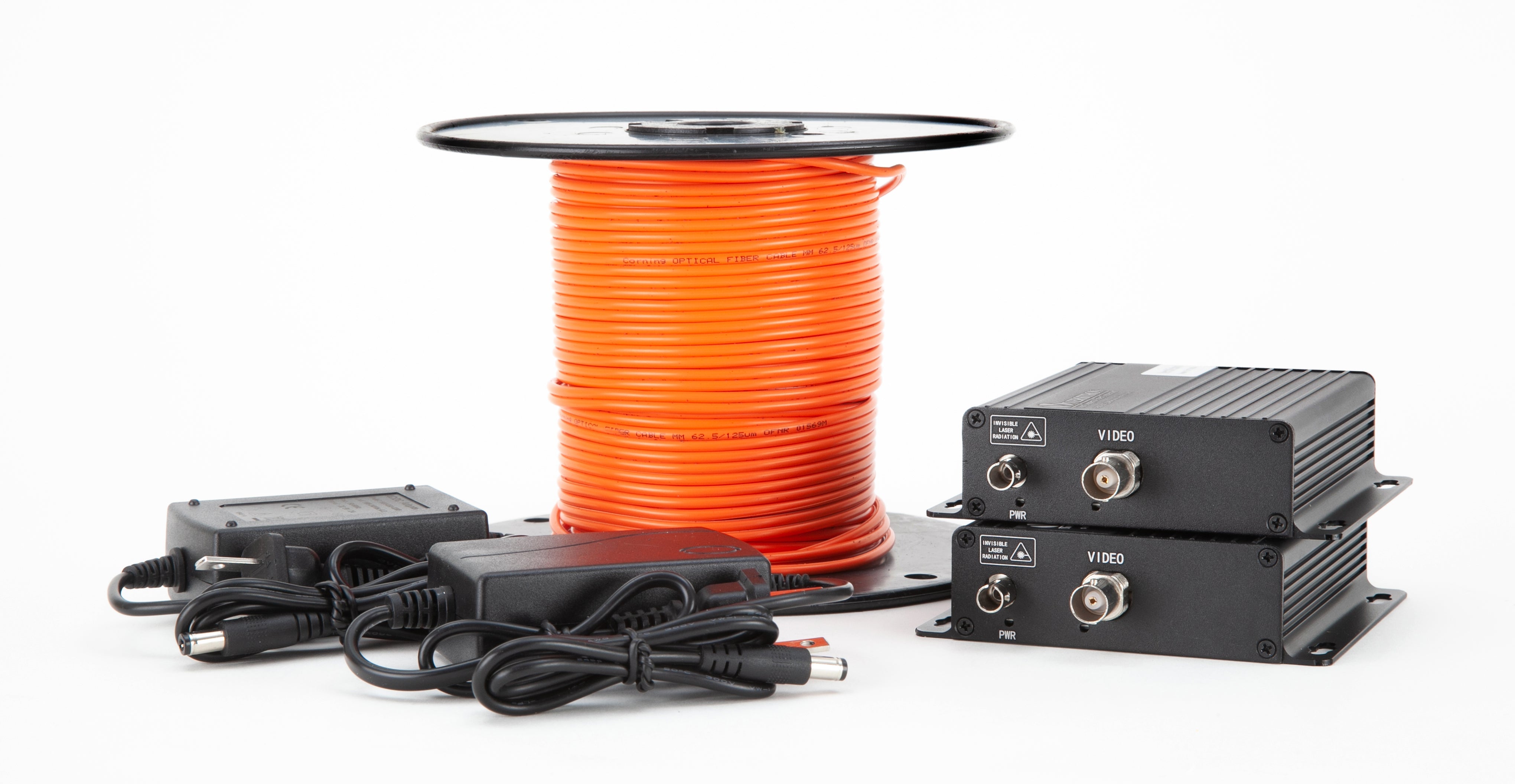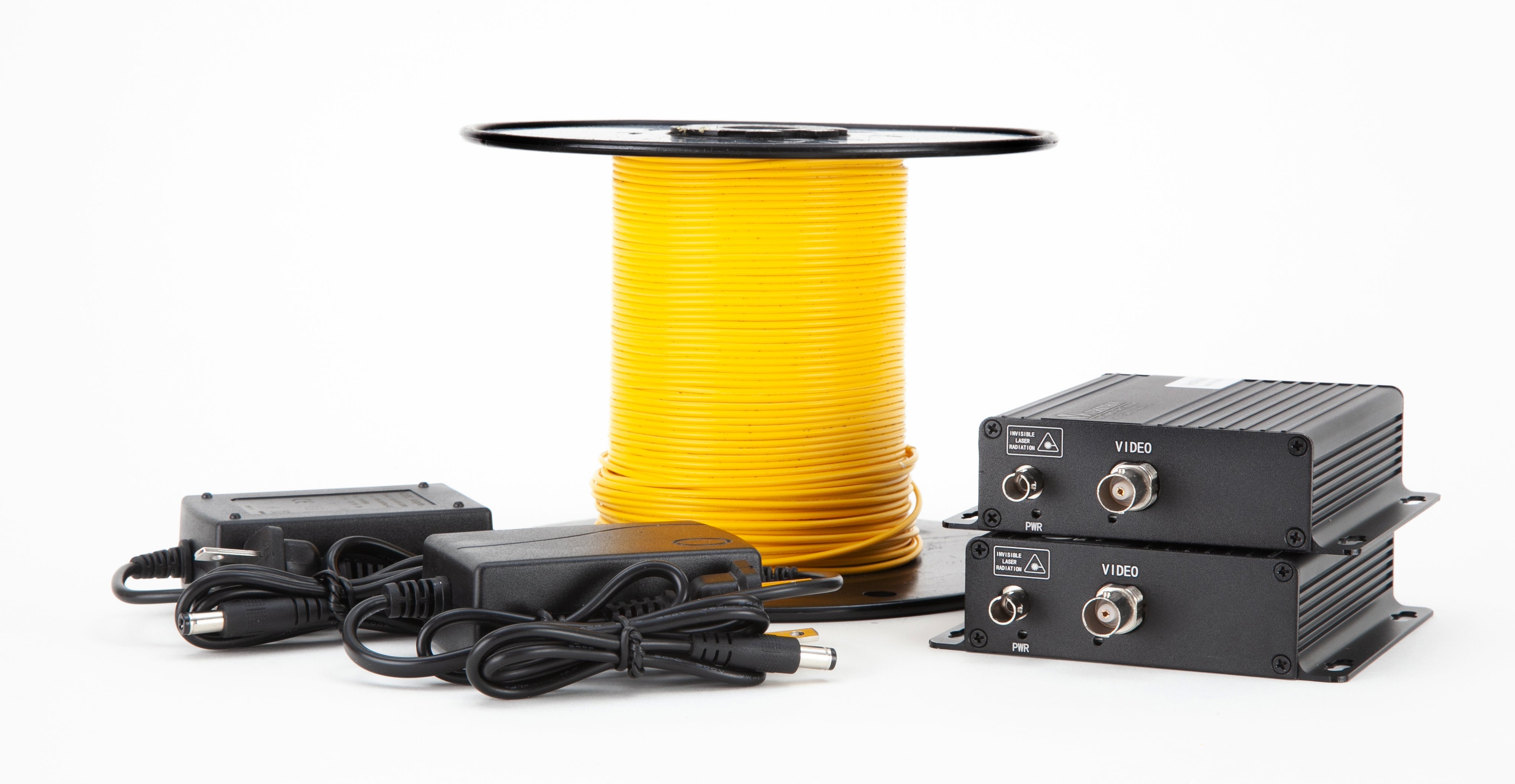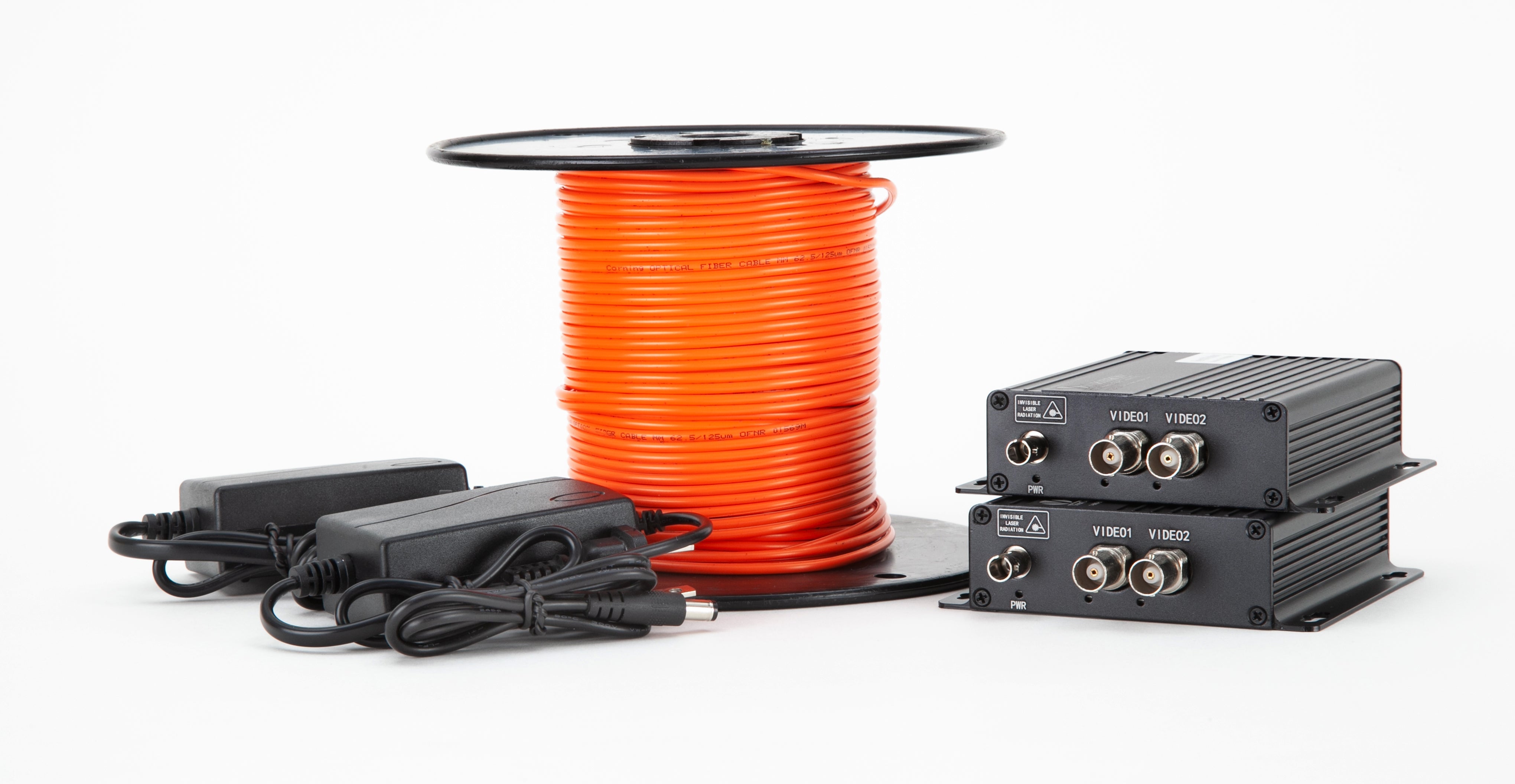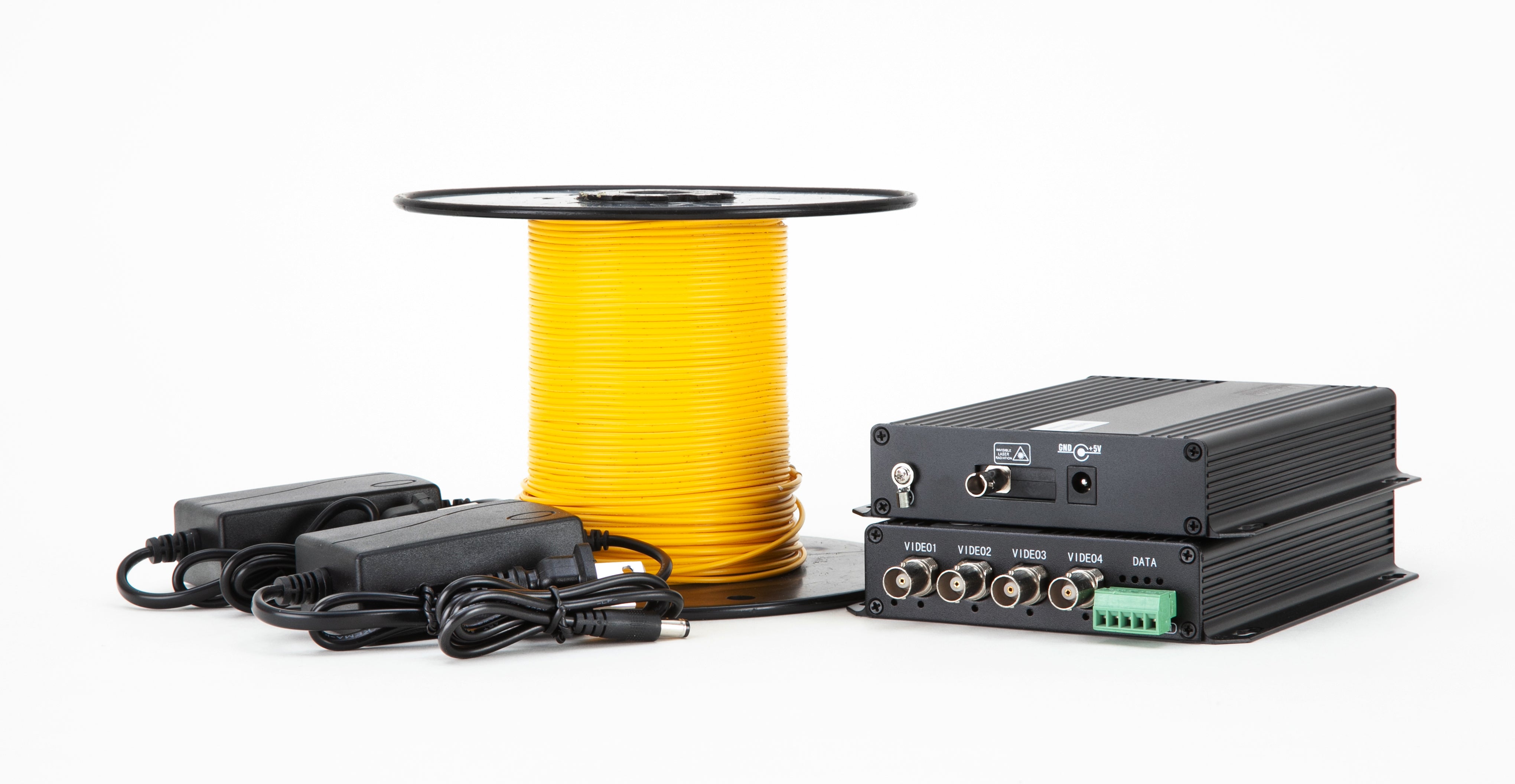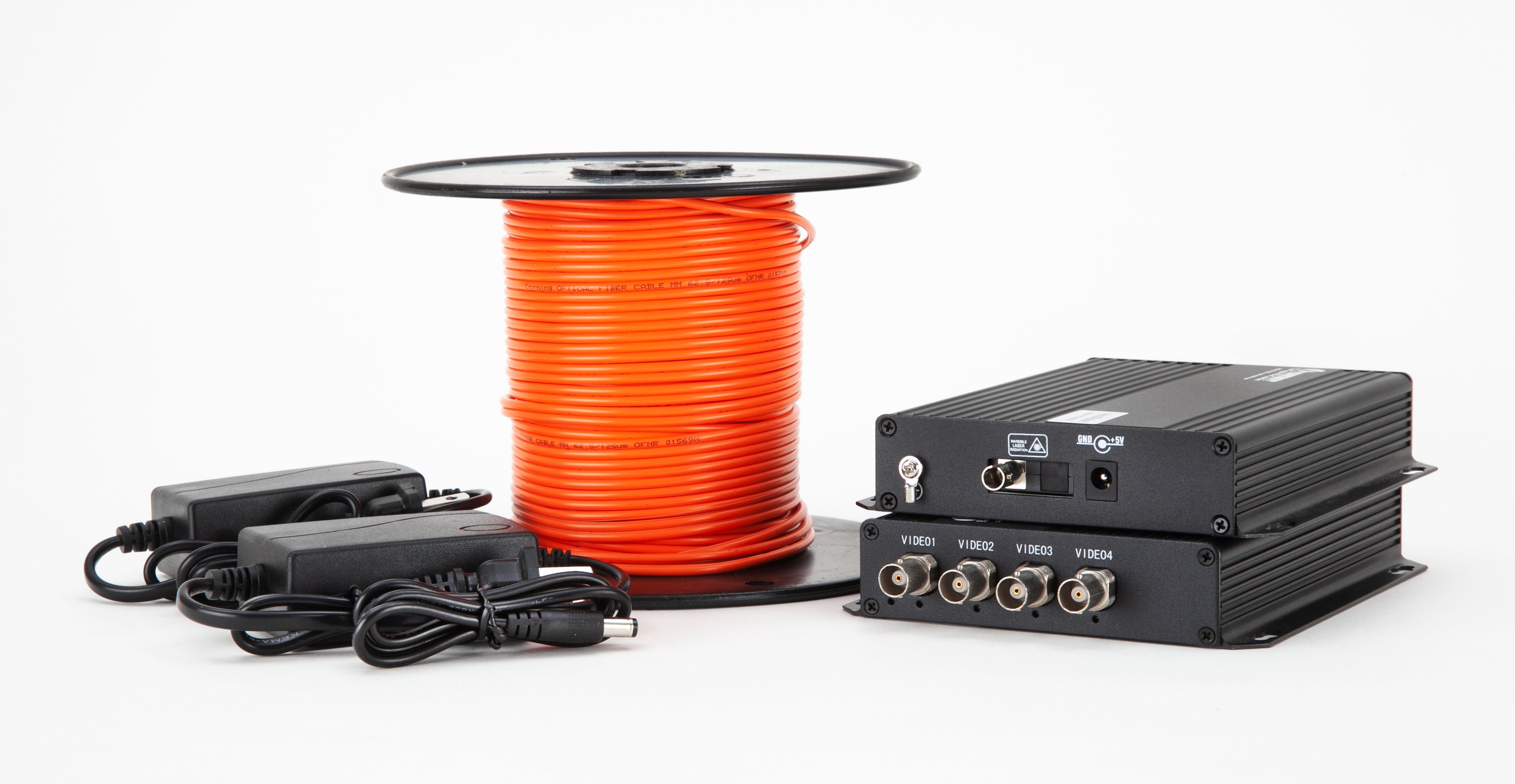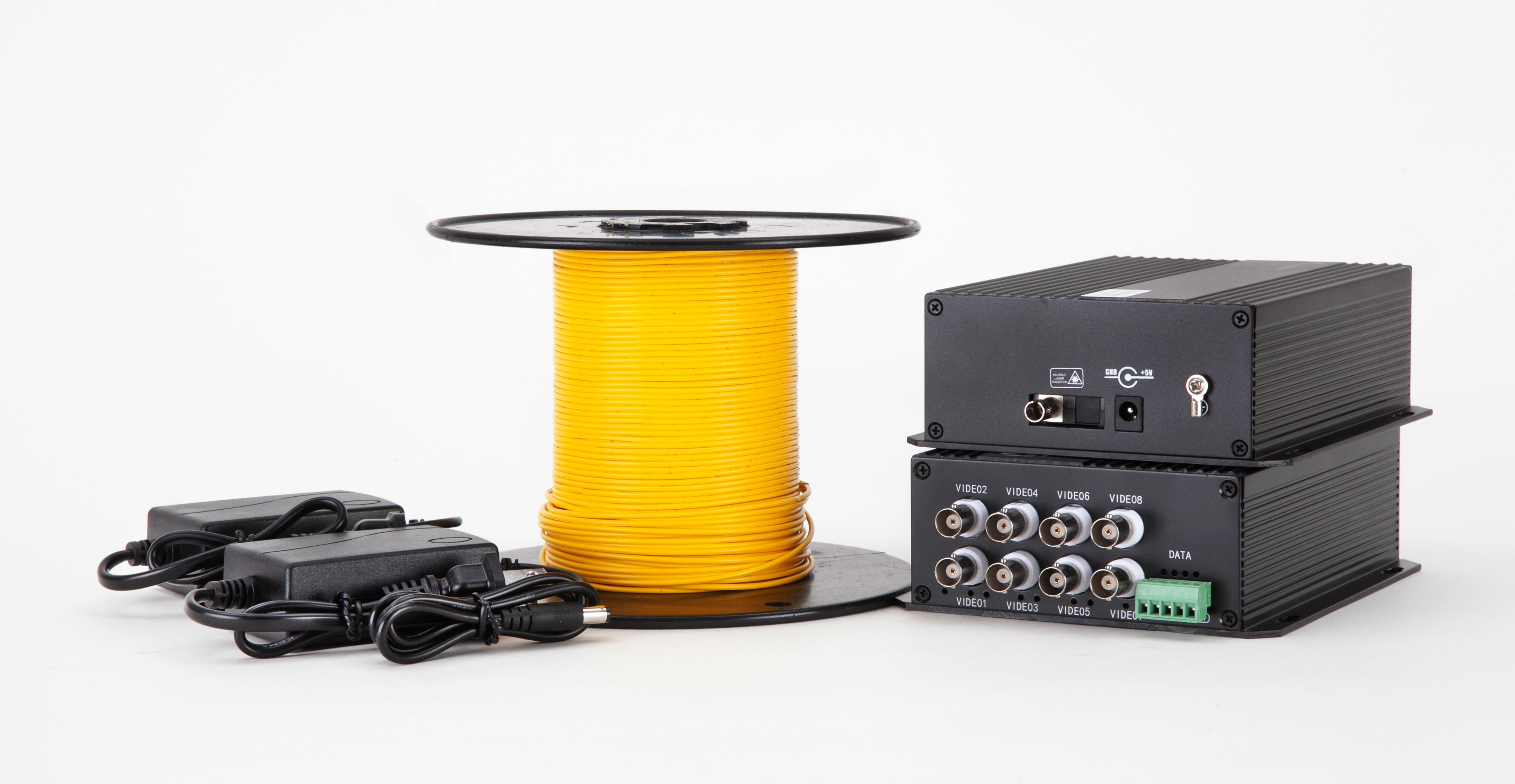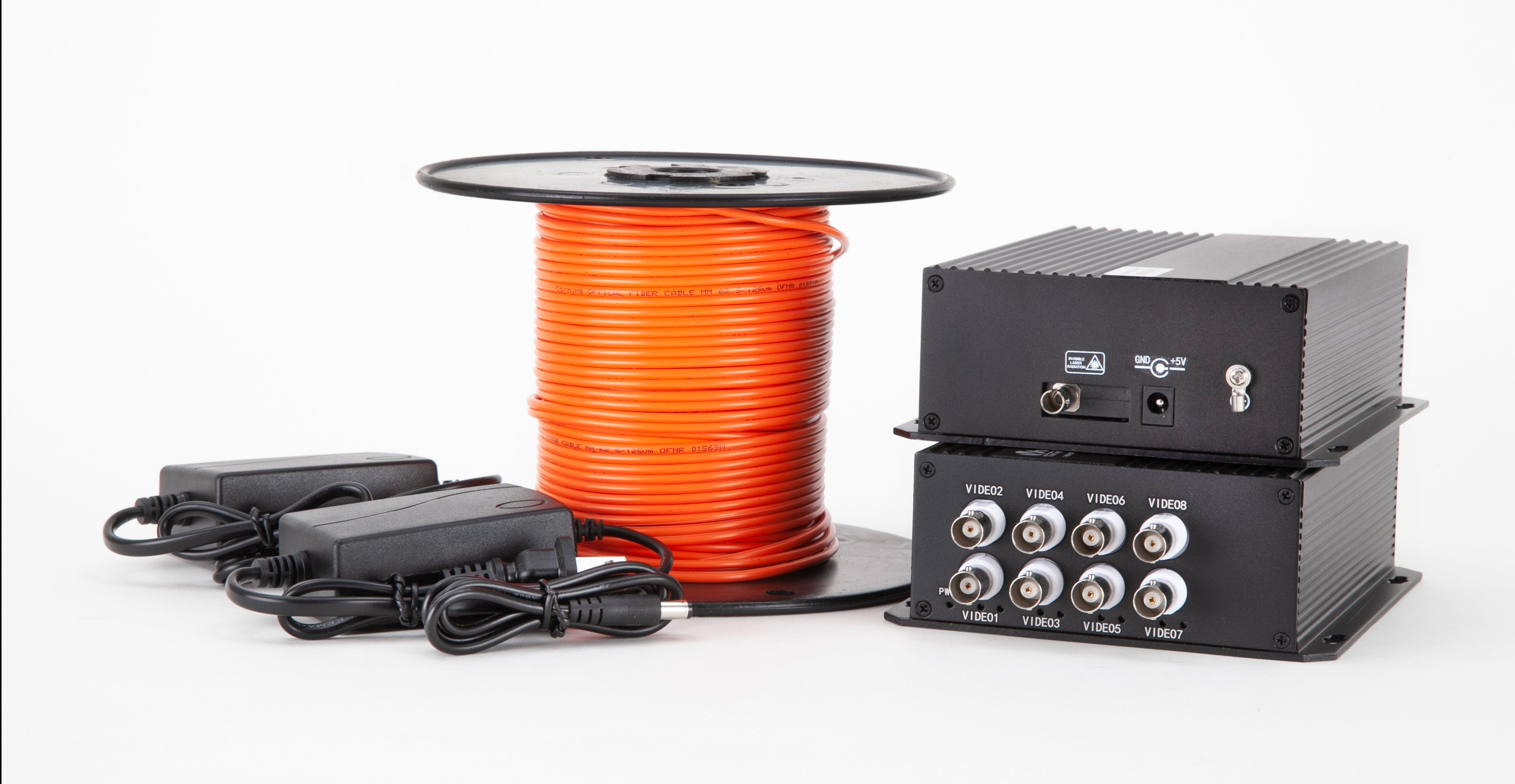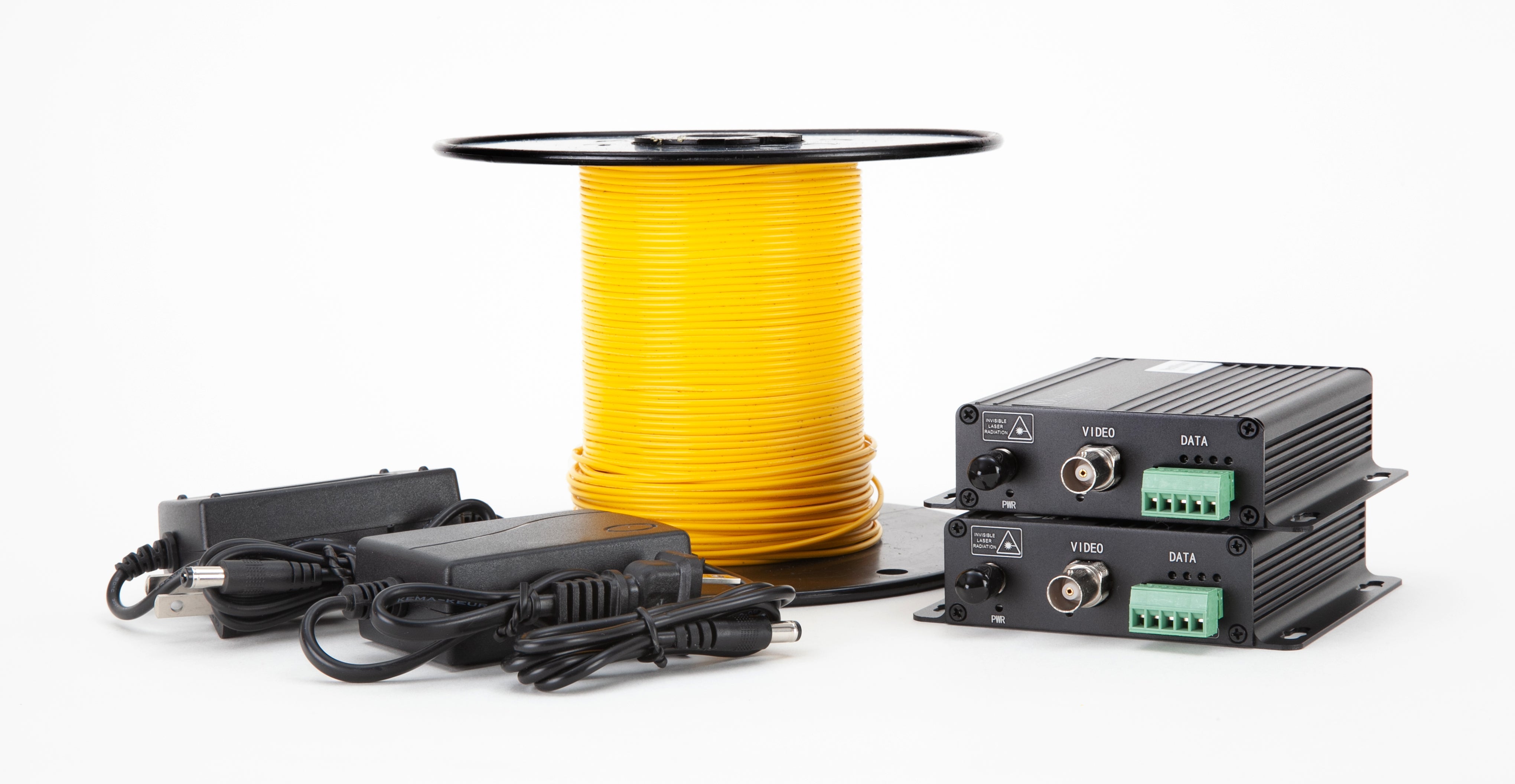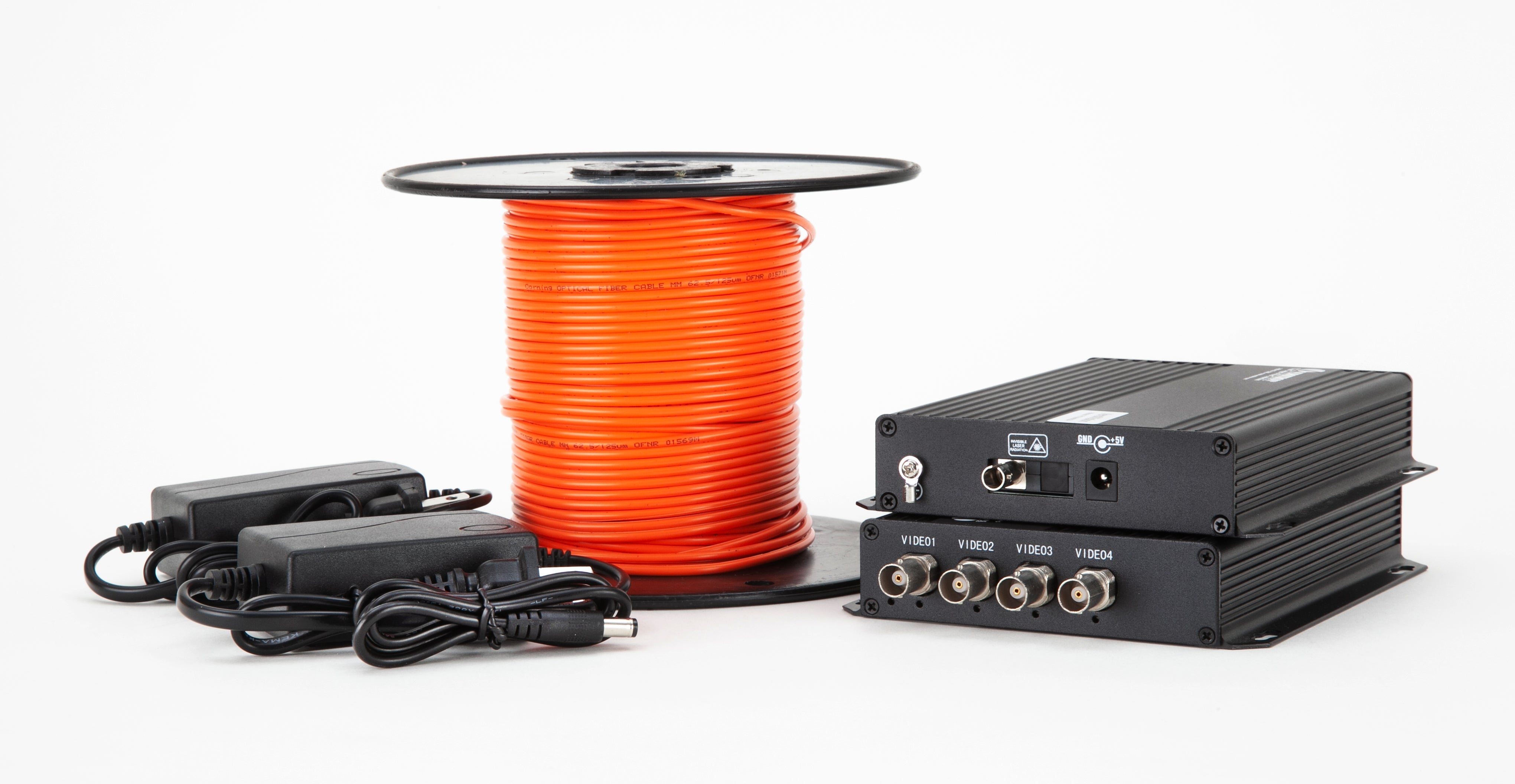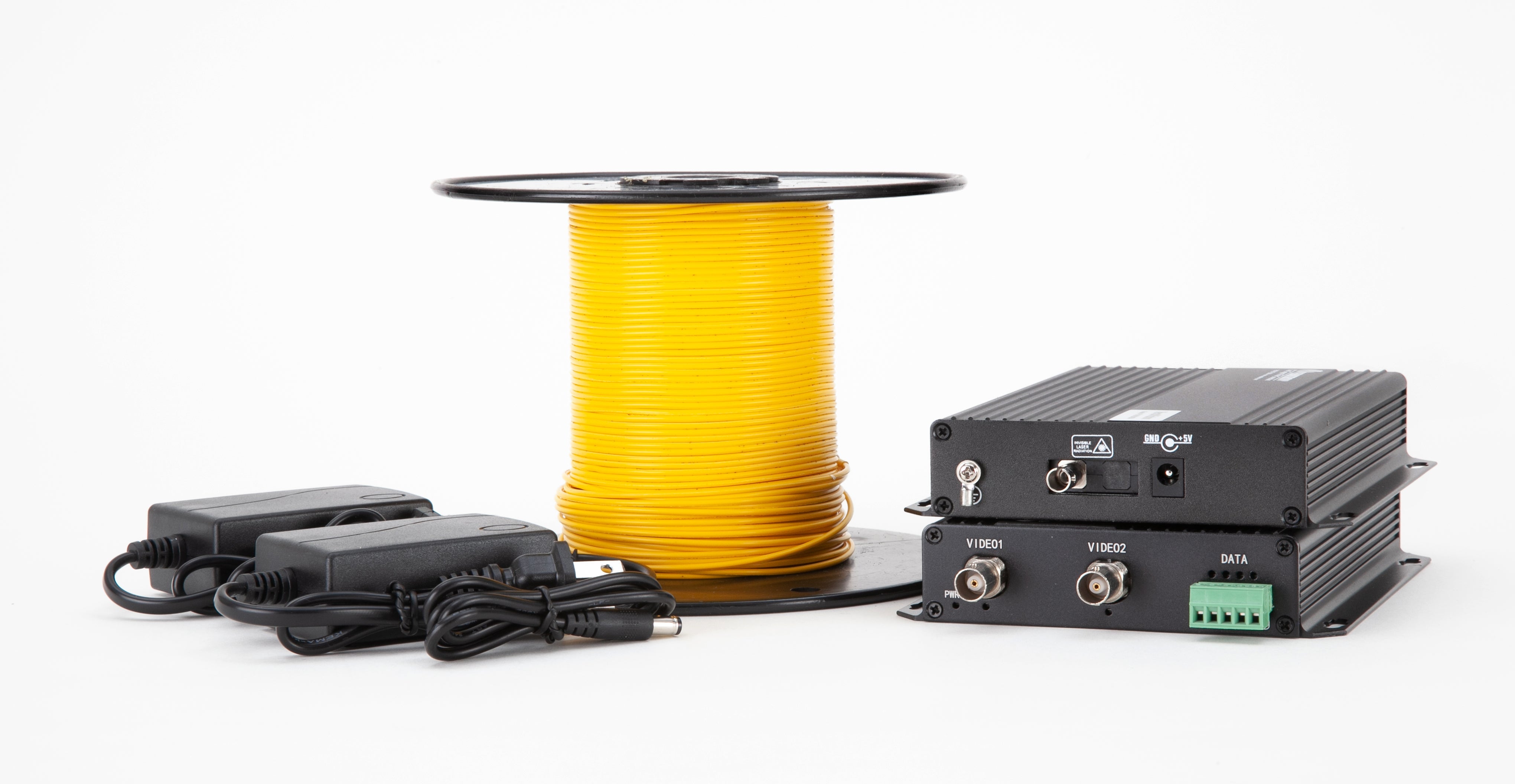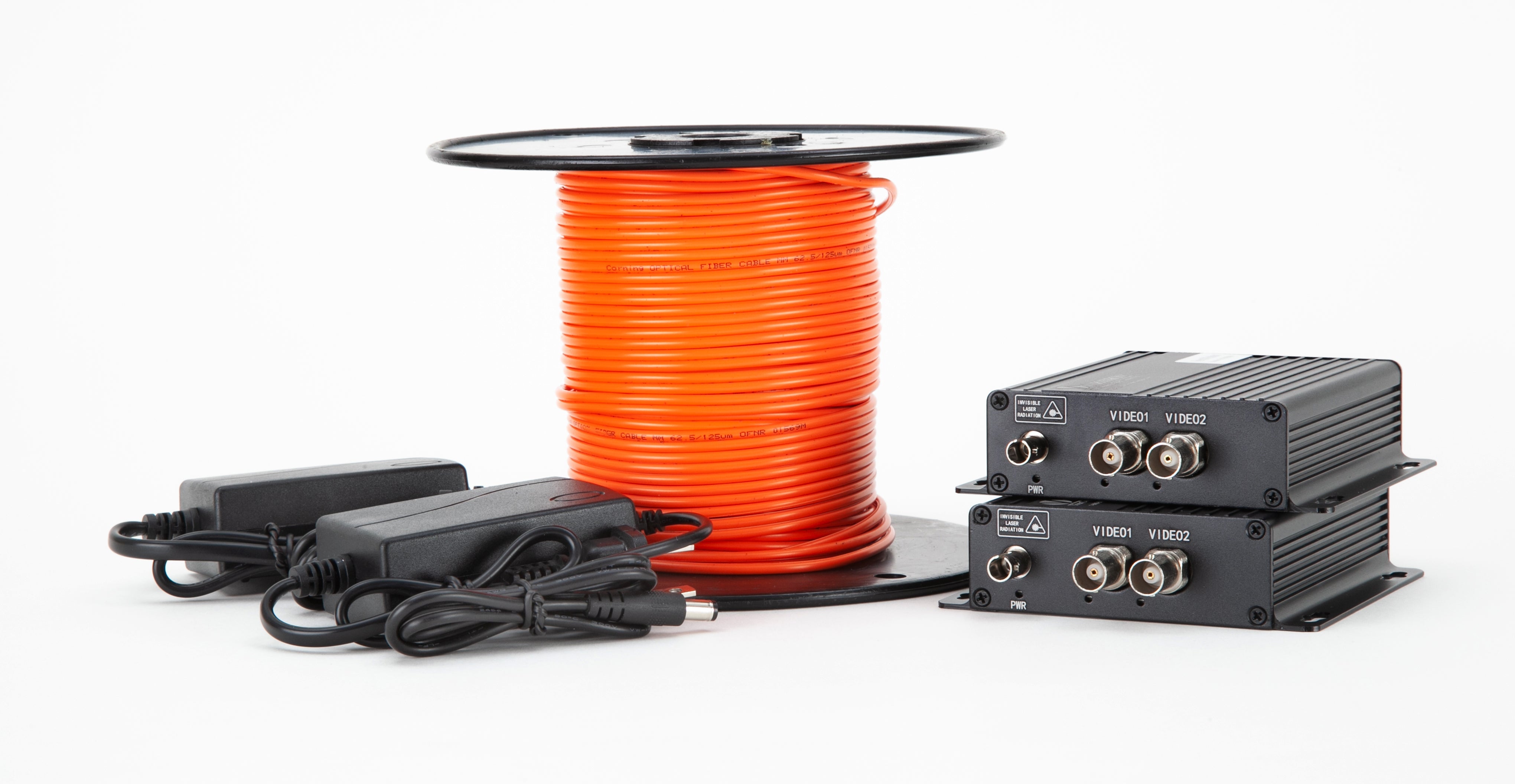Think of a gaming station, a broadcasting studio with plenty of HD television screens, or high-end surveillance systems used in mission-critical applications which are neatly arranged without a mesh of wires and HDMI cables around! That’s exactly what an HDMI wireless video transmitter or receiver does to your setup. It frees up space and lets you arrange the video source elsewhere or in another room. A wireless HDMI transmitter or receiver is a device that directly connects to a high-definition (HD) television, computer, gaming console, and so on. With this device, one can do away with an HDMI cable. It facilitates the streaming of videos and audio from the device connected to your screen by using low-band frequencies to transmit or receive an HDMI signal. This post focuses on the details of HDMI transmitter and receiver types and important information you should have when buying one, which helps make the right decision.

What is HDMI?
Before proceeding with detailed information about HDMI transmitters and receivers, here are some basic things to know about HDMI as a technology. High Definition Multimedia Interface or HDMI is a proprietary technology for transmitting and receiving uncompressed audio and video files over a network. It offers excellent-quality of images and videos, improved clarity, and color resolution. HDMI devices serve as an interface between a video or audio source and a TV or computer screen. This connection may be wired or wireless. Wired connections are made using HDMI cables, while wireless connections are made using wireless video transmitters. HDMI cables play an important role in connecting source devices to TVs in case of wired connectivity. One HDMI cable can connect many types of devices such as smartphones, projectors, televisions, and so on. It is bidirectional and hence can transfer and receive data over a single cable. Whether wired or wireless, both types of connections have their own strengths and weaknesses.
Wired vs. Wireless Video HDMI
Before you decide on the type of wireless video transmitter you need, it is also worth knowing about wired HDMI connectivity. Here is a comparative account of wired and wireless video HDMI connections.
- Connectivity: As mentioned, wireless HDMI can be set up by connecting a HDMI video transmitter and receiver with the video source located elsewhere within the network periphery. Wired HDMI is set up using an HDMI cable that is directly connected to the audio or video source with the other end connected to the display screen.
- Aesthetics and flexibility: Wireless HDMI enhances aesthetics and frees up space that is otherwise filled with wires, extenders, and so on. However, installing wireless HDMI depends on the application, space available, whether at home or in an office setup, and more. Definitely, wireless is more flexible than wired as it is movable or portable.
- Installing Location: With wireless, there can be EMI-related issues, and hence it should not be set up near other network devices, metallic objects, and so on. Data transmission is more direct in wired HDMI as it happens on a physical level.
- Cost: Wireless is costlier than wired. If an aesthetic-free space is a part of your application requirement, investing in wireless HDMI is worth it.
- Capabilities: Both wired and wireless HDMI help deliver HD audio and video with excellent color and image clarity. Wireless will work great as long as there are no hindrances in between its transmission path. Both the technologies offer 4K quality and most models offer 1080p resolution in a huge frequency range.
Wireless technologies are gaining popularity and wireless HDMI transmitters and receivers are nowadays integral parts of some fast-growing networks. The next section offers an overview of wireless HDMI transmitters and receivers and more.
An Overview of Wireless HDMI Transmitters and Receivers
Most wireless HDMI transmitter and receiver models have advanced configurations along with the Dynamic Frequency Selection (DFS) feature. This allows auto selection of an available channel and a good frequency with minimum or no EMI. You can easily opt for a wireless HDMI transmitter and receiver kit that comprises a transceiver, receiver, power supplies, and connector type. Wired ones also comprise have 100 meters of fiber optic or Ethernet cable along with the remaining items. Most types of these transceivers support 1, 2, or 4 channels of 8-bit digitally encoded HD-CVI, AHD, or HD-TVI video. Some types also support 1-channel of bi-directional data over one multimode or single-mode optical fiber.
Working of Wireless HDMI Transmitters and Receivers
Transmitters send the signal, while receivers receive the signal. Here are some points regarding how wireless HDMI transmitters and receivers work.
- While they work together, their functions are different. The transmitter sends data signal streams from an audio or video source such as a set-top box, and the receiver receives the signals and streams them on a television or a display screen.
- This transmission is done wirelessly using an electromagnetic frequency, and signals are encoded and decoded at both ends.
- Both the transmitters and receivers establish a connection with the devices within the supported frequency range.
- Data can be transmitted and streamed on more than one displays, and also from many sources to one or more displays at a time. Depending on the network range and transmitter and receiver capacity, it can be transmitted in a periphery of 30m and beyond on an average.
- While there are many benefits of using wireless HDMI, ensure there is no interference such as Wi-Fi, electronic gadgets, and so on.
- These signals can penetrate through walls, and hence can be transmitted to other rooms within the range.
Setting Up a Wireless Video HDMI Kit
Setting up a wireless HDMI video transmitter kit is quite easy. Here is a step-by-step guide to setting up a wireless video HDMI kit.
- There are three basic steps – Set up the transmitter, then the receiver, and test the functioning once installed.
- The first important step is to switch off the source and receiving device when connecting the transmitter and receiver.
- Connect the wireless transmitter directly to the source using a short HDMI cable. Connect its adapter to the power source and switch on.
- Ensure the power light on the transmitter shows green.
- Plug a short HDMI cable into your TV or display port.
- Connect the cable’s other end to the receiver port. Switch on the electric supply and ensure the shows green light.
- Now check if the connection is working by streaming an audio if video file.
- If this works, you are ready to start streaming.
Limitations of Wireless HDMI Transmitter and Receiver
Wireless HDMI transmitters and receivers offer the convenience of cable-free video and audio transmission, but they also come with some disadvantages that should be considered before using them:
- Latency: Wireless HDMI systems may introduce a slight delay (latency) in transmitting video and audio signals from the source to the display. While modern systems aim to minimize latency, it can still be noticeable in real-time applications like gaming or live presentations, potentially affecting the user experience.
- Interference and Signal Quality: Wireless HDMI uses specific frequency bands (e.g., 5 GHz) for transmission, which can be susceptible to interference from other wireless devices operating in the same frequency range. Physical obstacles, such as walls and furniture, may also weaken the wireless signal, leading to signal drops or degraded video quality.
- Range Limitations: The effective range of wireless HDMI may be limited compared to traditional HDMI cables. The signal strength can weaken over long distances or when passing through walls, potentially restricting the positioning of the source and display devices.
- Battery or Power Requirements: Wireless HDMI transmitters and receivers often require their power sources, which means additional devices to manage and keep charged. Battery life can be a concern, especially for extended use.
- Device Compatibility: Not all devices may support wireless HDMI connections. Before investing in a wireless HDMI system, ensure that your source devices (e.g., gaming consoles, laptops) and displays (e.g., TVs, projectors) are compatible with the chosen wireless HDMI technology.
- Cost: Wireless HDMI solutions can be more expensive than traditional HDMI cables. The cost of a high-quality wireless HDMI system may add to the overall expense of your setup.
- Security Concerns: Wireless transmissions can potentially be intercepted by unauthorized users. While modern wireless HDMI systems often incorporate encryption and security features, there may still be concerns about the security of sensitive content or confidential presentations.
- Potential Quality Variations: The performance of wireless HDMI systems can vary depending on the quality and technology used. Cheaper or lower-quality options may result in signal degradation or inconsistencies in video and audio transmission.
- Complexity and Setup: Setting up a wireless HDMI system may require some configuration and troubleshooting, especially when dealing with interference or compatibility issues. It can be more complex than a straightforward wired HDMI connection.
- Lack of Standardization: Various wireless HDMI technologies exist, and not all are standardized across different manufacturers. This lack of standardization can lead to compatibility challenges when mixing products from different brands.
Conclusion:
All of this information is important in case you want to invest in a wireless HDMI transmitter and receiver for your application. You may have plenty of questions beyond this, for which it is best to consult an experienced player in this segment. Also, it is crucial to source your devices from a reliable and certified manufacturer and supplier. VERSITRON is a one-stop-shop for all your network requirement. The company offers HDMI transceivers in various configurations apart from other network devices that are compatible with Ethernet as well as fiber optic networks. To get more details about All HDMI Transceiver and Receiver, Feel free to connect through contact us.



